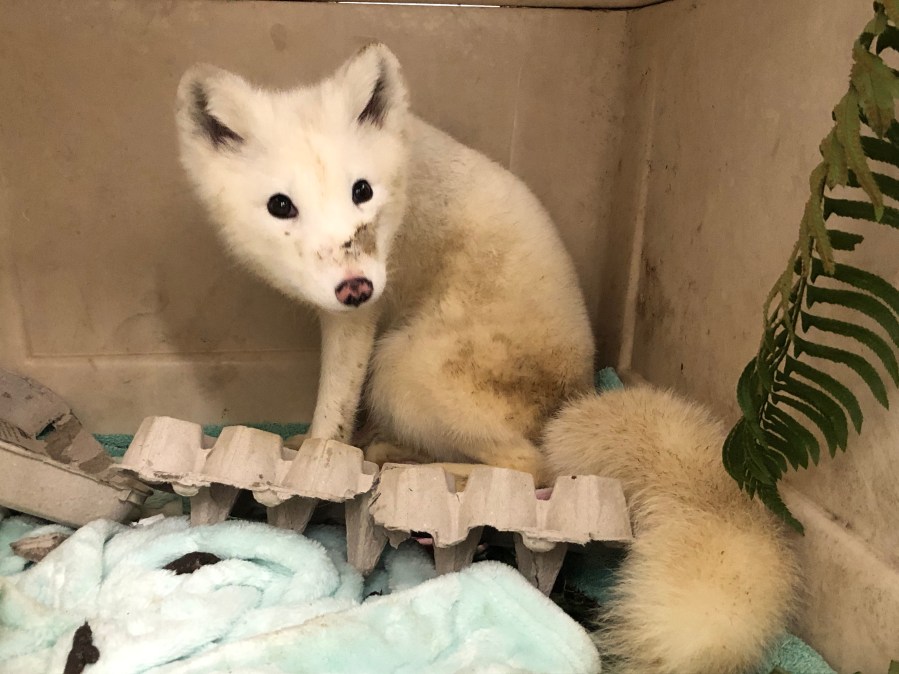In a recent incident in Portland, Oregon, a stray Arctic fox was rescued and brought to the Bird Alliance of Oregon’s wildlife rehabilitation hospital on October 12. The wildlife hospital, which is dedicated to rehabilitating an array of wild animals, received a 6.5-pound female fox that was found wandering the streets in a thin and dehydrated state. Despite her condition, the fox was otherwise deemed in good health, signaling that she may have received some care prior to her rescue. A good Samaritan spotted the fox in distress and brought her to the rehabilitation center, highlighting the community’s awareness and concern for local wildlife.
Ali Berman, the spokesperson for the Bird Alliance of Oregon, indicated that the exact origins of the fox remain unclear. The belief is that the fox has lived a life of captivity, as evidenced by her lack of fear of humans. Instead of fleeing when approached, the fox moved towards the people who rescued her, suggesting a significant over-reliance on human presence for survival. Berman emphasized the anomaly of finding such a creature in Portland, given that Arctic foxes are native primarily to much colder regions, such as Greenland, Iceland, northern Russia, Alaska, and parts of Canada, which are over 1,000 miles from Oregon’s temperate environment.
The appearance of the Arctic fox in a non-native habitat like Portland raises numerous concerns regarding wildlife management and the illegal pet trade. As stated by Berman, these foxes do not naturally occur in Oregon, categorizing them as exotic animals within the state. This incident sheds light on how domestication can severely affect an animal’s behavior and fitness for survival in the wild. The wildlife authorities are actively investigating the circumstances surrounding the fox’s presence in Portland, including whether it inadvertently escaped from captivity or was released by someone who owned her unlawfully.
Ashley Lema, the manager of the Wildlife Care Center, voiced gratitude towards the individual who sought help for the fox. The immediate priority is to nurse the fox back to health, after which the Oregon Department of Fish and Wildlife (ODFW) will determine her future. Unfortunately, due to her domestication, she will not be released into the wild. Lema expressed concern that the fox’s situation is emblematic of a larger issue: many wild animals are treated as pets without regard for their natural instincts and survival skills.
The rehabilitation of animals like this Arctic fox illustrates the risks associated with keeping wildlife as domestic pets. Lema pointed out that such practices not only endanger the animals but also pose risks to humans. An animal’s fundamental instincts can be compromised when raised in captivity, rendering it incapable of fending for itself in the wild. The lethargy in adaptation is particularly dangerous for species that are unsuited to the environments they are found in, leading to remarkable situations like the one seen with the Arctic fox.
In conclusion, the case of the Arctic fox in Portland serves as a stark reminder of the potential consequences of human interference with wildlife. It underscores the importance of understanding the ecological roles that wild animals play and the need for responsible wildlife management. As efforts to rehabilitate this Arctic fox continue, it remains a poignant example of how wildlife is affected by human actions, both positively and negatively. The situation calls for deeper awareness and education around the realities of wild animal care, reinforcing the idea that wild animals should remain in their natural habitats, untouched by the complications of domestication.

